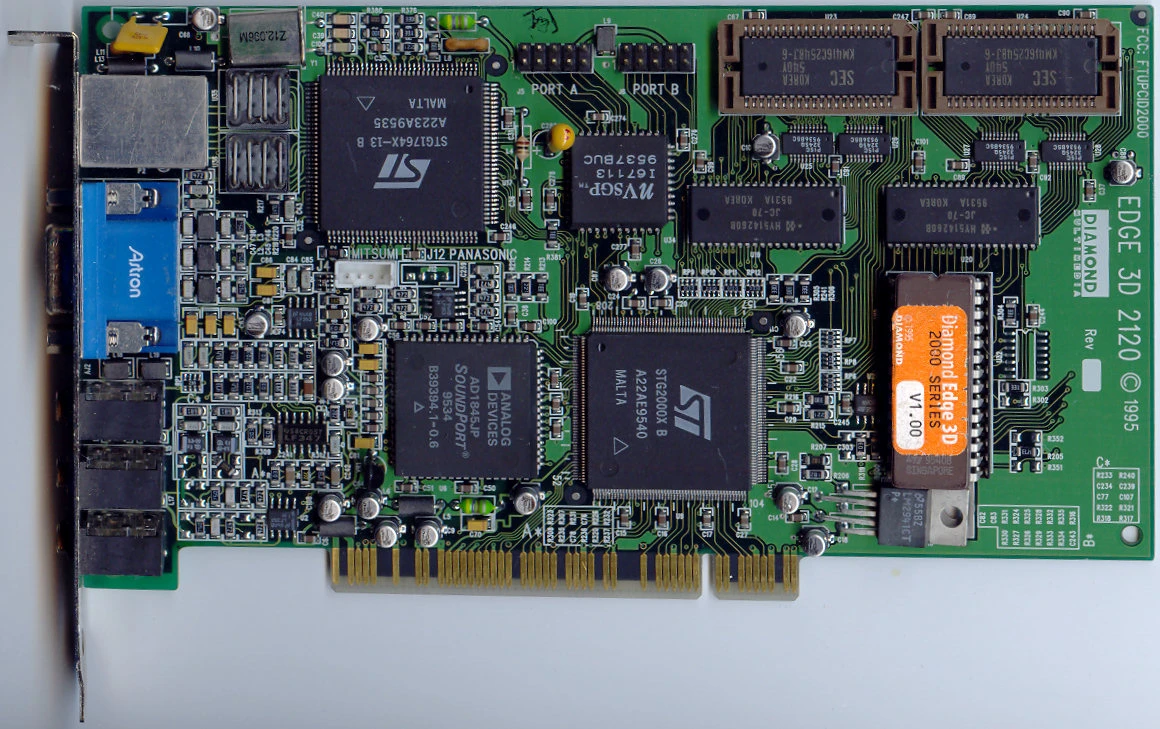Nvidia, a tech giant now valued at over one trillion dollars, has a storied history in the world of graphics processing. But did you know that their first-ever product was a total flop? Let’s journey back to 1995 and explore the rise and fall of the nv1, a chip that marked Nvidia’s early foray into the world of graphics and multimedia.
The Birth of the nv1

In 1995, Nvidia introduced the nv1, a graphics processor embedded within a PCI card known as “The Edge 3D,” which was manufactured by hardware company Diamond. What made the nv1 unique for its time was its ambitious attempt to combine graphics processing, audio capabilities, and joystick support on a single card—a rarity in the mid-’90s computing landscape.
Nvidia’s vision was to offer users a convenient all-in-one solution, but what truly set the nv1 apart was its early collaboration with Sega. At that time, Sega aimed to bring its Saturn console games to the PC platform, and Nvidia eagerly embraced this opportunity.
The Sega Connection
Nvidia’s partnership with Sega was a significant turning point. Sega wanted to make its Saturn console games available on PCs, and Nvidia was determined to make it happen. Although the nv1 lacked support for common gaming APIs like OpenGL and 3dfx’s Glide, it shared a critical similarity with the graphics chip inside the Sega Saturn—they both rendered quadrilaterals (quads) as the fundamental shape for rendering graphics.
But why was this similarity so crucial? To understand, we need to delve into the world of polygon rendering.
The Quadrilateral Quandary
In the mid-’90s, the video game industry had not yet settled on one type of polygon as the standard. While triangles were commonly used, both the Saturn and the nv1 utilized quadrilaterals (quads) as their primary building blocks for rendering graphics.
Quads had certain advantages over triangles. They made it easier to model curved surfaces and helped developers avoid some of the texture warping issues that plagued competitors like the original PlayStation. However, quads were also more computationally expensive and posed challenges for mapping typical game textures.
The Downfall of the nv1
Despite its architectural innovations, the nv1 faced numerous challenges. Its 2D performance was lackluster, and its audio capabilities failed to impress. In essence, it was an “all-in-one” solution that didn’t excel in any of its functions, reminiscent of those multi-functional printers with lackluster performance in every category.
Moreover, as DirectX, a software tool for game developers, gained prominence, it was built around triangles rather than quads. Nvidia attempted to salvage the nv1 by releasing DirectX drivers, but they were slow and buggy, essentially functioning as a software emulation layer.
This shift marked the end of any real chance for a graphics chip optimized for quads. Nvidia’s plans for an improved nv2 were scrapped, and the company pivoted toward a triangle-based architecture for its Riva 128 product, which was firmly focused on DirectX support.
The Rise of Nvidia
The Riva lineup proved to be a resounding success and established Nvidia as a formidable player in the PC hardware industry. This success paved the way for the release of the original GeForce chips in 1999, solidifying Nvidia’s reputation as a graphics card powerhouse.
In conclusion, while the nv1 may have been Nvidia’s first product and a commercial failure, it marked the beginning of a journey that ultimately led Nvidia to its current status as a trillion-dollar tech giant. The lessons learned from the nv1’s struggles played a crucial role in shaping Nvidia’s future endeavors in the world of graphics processing.
#Nvidias #Humble #Beginnings #Story #nv1


